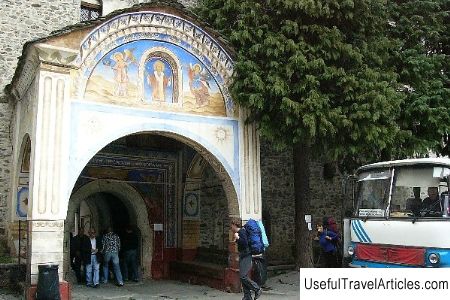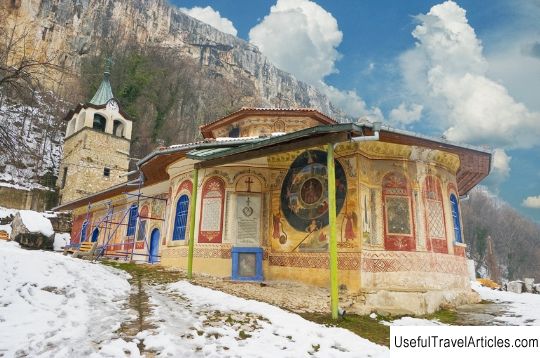Rila Monastery in Bulgaria
Rating: 8,6/10 (3805 votes)  The Rila Monastery is the largest stavropegal male monastery in the Bulgarian Church. The monastery is located in the northwestern part of the Rila mountain range, at an altitude of 1 150 meters above sea level, in the valley of the Rila river. According to legend, the foundation of the monastery took place in the 30s of the X century. Its founder was the Monk John of Rylsky, who at that time lived in a cave not far from the place where the monastery is today. The construction of the monastery was carried out by the disciples of John, who came for the teacher to the mountains to continue their studies. Almost from the very moment of its creation, the monastery was revered and supported by the rulers of Bulgaria. Before the conquest of Bulgaria, almost every ruler of the Second Bulgarian Kingdom granted considerable sums to the monastery, as a result, the monastery turned into the spiritual and cultural center of Bulgaria. The monastery reached its peak in the period from the XII to the XIV century. After the earthquake that happened in the XIV century, the monastery was thoroughly rebuilt by the local feudal lord Hrelyo Dragovol, after which the building was a solidly fortified architectural ensemble. In the 15th century, the monastery was plundered by the Turks. Today, you can see only the surviving tower, built in 1334-35, named after Dragovol, and an adjoining small church dating from 1343, as well as a carved gate and a bishop's throne. Thanks to donations from the Athos Rossicon , at the end of the 15th century, the monastery was restored by three brothers from Kyustendil. A little later, the relics of John of Rylsky were moved here. During the Ottoman rule, the monastery was the keeper of the Bulgarian language and culture. A terrible fire that occurred during the Bulgarian National Revival completely destroyed the monastery, but after a while the complex was restored. Money was collected from all over the country for the reconstruction of the monastery. It was at that time that the monastery acquired its present appearance. In 1844, a school was established at the monastery by Neophyte Rilski. Today, the monastery houses the relics of John of Rila and the icon of the Mother of God 'Guidebook'. (`` Odigitria '') with 32 partitions with the relics of saints. In 1976, the monastery complex was recognized as a national historical monument, and in 1983 it was included in the UNESCO World Heritage List. The entire complex of the monastery is located on a rectangular area of 8 800 m 2. On the territory of the monastery there is also a museum, which contains 35 thousand exhibits – collection of icons, ethnographic and cult objects, works of applied art, etc.     
We also recommend reading Shipka monastery in Bulgaria Topic: Rila Monastery in Bulgaria. |




